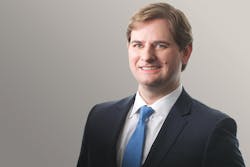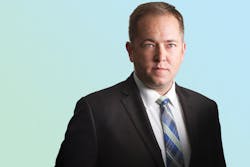Public comment period extended to early August
James K. Vines, Andrew M. Stakelum, Brian Thomas Stansbury, Kayla D. Carrick, Erich J. Almonte
King & Spalding, LLP
On May 11, 2018, the Bureau of Safety and Environmental Enforcement (BSEE) announced proposed revisions to the Oil and Gas and Sulfur Operations in the Outer Continental Shelf Blowout Preventer Systems and Well Control Rule (commonly referred to as the “Well Control Rule”). 1BSEE recently extended the deadline for interested parties to comment to BSEE on the proposed regulations from early July to Aug. 6, 2018. As of July 12, about 5,000 comments have been submitted by citizens, congressmen, environmental groups, and industry participants, though the vast majority are from concerned citizens. It is likely that the total number of comments will continue to grow and that the bulk of industry comments have yet to be submitted.
The current proposed revisions to the Well Control Rule result in part from industry’s objections to the 2016 Well Control Rule. In 2016, industry objected that the 2016 Well Control Rule failed to account for best available, economically feasible safety technologies and that certain proposed requirements were neutral in benefit but would render some wells uneconomical. Indeed, certain of the 2016 proposals failed to follow consensus industry standards that BSEE participated in creating and could have led to unintended reductions in safety. The new proposal amends regulations concerning well design, well control, casing, cementing, real-time monitoring, and subsea containment that were implemented in 2016.
Erich J. Almonte
The offshore oil and gas industry undertook a number of initiatives to improve deepwater drilling safety in the wake of the Macondo incident, resulting in new and effective industry consensus standards for deepwater drilling such as those contained in the American Petroleum Institute (API) standards on well control and blowout preventer systems. BSEE’s 2016 Well Control Rule incorporated some of these technical standards, but some of the Well Control Rule provisions enacted in 2016 did not take into account best available and economically feasible technologies. For example, industry advocated against a set 0.5 ppg drilling margin that did not readily allow for needed variances and against incorporating real-time monitoring (RTM) requirements (that actually create data security vulnerabilities).2
BSEE’s new proposed revisions to the Well Control Rule now address a number of issues raised by industry during the comment period in 2016. In announcing the proposed rule, BSEE stated that it will correct errors and reduce certain unnecessary regulatory burdens imposed under the existing regulations. The proposed revisions clarify several requirements, and update others based on new practices and technology.
Specific key proposed amendments to the Well Control Rule include:
• Clarifying rig movement reporting requirements
• Eliminating redundant and unnecessary reporting
• Removing many of the prescriptive real-time monitoring requirements to move toward a more performance-based approach
• Better aligning the rule with API Standard 53, including revisions to accumulator system requirements and accumulator bottle requirements and allowing the combination of shear rams to comply with shearing capability requirements
• Incorporating the latest edition of API Standard 17H on remotely operated vehicles to eliminate conflict with API Standard 53
• Removing smaller lift boats from the types of vessels requiring well shut-in when they approach within 500 ft
• Revising the control station and pod testing schedules
• Codifying certain BSEE policies and including others that were inadvertently omitted from the current rule, such as coiled tubing and snubbing requirements to be included in Subpart G.
General comments
One commentator to date urged BSEE to adopt its proposals that are in line with voluntary consensus standards, like API. Another submitted a comment urging BSEE to use voluntary consensus standards, rather than replacing them with unique government-development standards. BSEE’s proposed revisions include incorporating the latest applicable voluntary consensus standards, such as API Standard 53 and others. According to this commenter, BSEE’s proposal to use these voluntary consensus standards is required by the National Technology Transfer and Advancement Act (“NTTAA”), Public Law 104-113, which prohibits use of government-unique technical standards in lieu of voluntary consensus standards unless the consensus standards are barred by law or otherwise shown to be impractical. The process used in 2016 to promulgate unique government standards in the rule was not compliant with NTTAA, the commenter states.
This commenter separately reminded BSEE of The Outer Continental Shelf Lands Act, 43 U.S.C. §§ 1331, et seq., which bars BSEE from imposing rules on outer continental shelf operations that are found not to be “economically feasible.” The commenter states that BSEE’s recent cost impact assessment found needless waste under the 2016 Well Control Rule, and BSEE properly proposes adjustments to the 2016 rule in line with consensus standards in the current proposals. Similarly, one citizen and former well control instructor commented that BSEE’s proposals more in line with API Standard 53 are “critical to safety.” Another citizen commented urging BSEE to make clear, well-defined, and unambiguous revisions to reduce uncertainty and the need for clarifications that resulted from the 2016 rule. The citizen recommended efforts to reduce the need for clarifications and agency interpretations after the rule is enacted.
BSEE specifically seeks public comment on the following topics, and to date, the following comments have been submitted related to those topics:
Drilling margin requirements. BSEE’s current proposal keeps the drilling margin requirement at 0.5 ppg despite its being inappropriate for deepwater and certain other wells. BSEE has approved the use of drilling margins less than 0.5 ppg on 32 of 305 wells drilled since the Well Control Rule went into effect, 31 of those in deepwater. BSEE considers this 10% variance history significant enough to consider revising this regulation. BSEE is specifically soliciting comments on both (1) the process to deviate from the 0.5 ppg drilling margin, and (2) whether the 0.5 ppg drilling margin in the proposed rule should be revised or removed.
To date, the only comments on this topic comes from a group of 21 US congressmen from Florida and an environmental group who wrote in opposition to the proposed revisions to the Well Control Rule. According to the group of congressmen, the magnitude of the Macondo incident and its effects on Florida merit the current Well Control Rule safety regulations that were based on years of information gathering and engagement with the public and industry, rather than the proposals which weaken the rule. As a result, the group objected to potentially removing the regulations on safe maximum or minimum drilling pressures at new sites. According to this group, the current drilling margin regulation requires offshore oil rigs to maintain a safe pressure for drilling in order to prevent surges and potential blowouts. The environmental group, Coalition to Protect America’s National Parks, comments that BSEE’s request for comments on performance-based standards is too vague and BSEE should instead solicit input through an Advance Notice of Proposed Rulemaking. The group also argues that there is enough flexibility in the current rule without changing the standard. Finally, the group notes that mud weight is the primary mechanism for well control and that BSEE should keep the current standard, particularly for exploratory wells, where the operator has less information upon which to justify a lower drilling margin.
Real-time monitoring requirements. BSEE proposes removing many of the prescriptive RTM requirements and moving toward a more performance-based approach. While the proposed rule still requires the ability to collect real-time data, BSEE is considering changes to how that data is handled. BSEE is specifically soliciting comments about the appropriateness of utilizing RTM for workover, completion, and decommissioning operations, or whether RTM requirements should be limited to drilling operations.
The group of Florida congressmen also expressed concerns about the removal of real-time monitoring requirements, as did the Coalition to Protect America’s National Parks, who again expressed concern about the vagueness of the performance-based standards argued for an Advanced Notice of Proposed Rulemaking.
API Standard 53 addendum. BSEE specifically asked for comments on whether the API Standard 53 addendum should be included within the documents incorporated by reference.
Requirements for a surface BOP stack (Section 250.733). BSEE proposes removing the requirement to have an alternative cutting device used for shearing electric-, wire-, or slick-line if blind shear rams are unable to cut and seal under maximum anticipated surface pressure. According to BSEE, the alternative cutting device is no longer necessary because the currently commercially available shear rams have increased design capabilities, which are capable of shearing these types of lines. However, BSEE noted it is considering keeping the alternative cutting device provisions in the regulations or extending the compliance date to allow the use of the alternative cutting devices until a more appropriate date when the surface stack shear rams can be upgraded to shear electric-, wire-, or slick-line. BSEE is specifically soliciting comments about the effectiveness of using an alternative cutting device and whether BSEE should continue to allow its use. An offshore operator and producer submitted a comment requesting BSEE leave the “alternative cutting device” language in the Well Control Rule so that an equipment manufacturer can commercially produce a set of blades that will shear electric-line and slick-line with the required capability. The commentator referred to testing conducted in March 2018 that resulted in efforts to redesign the blind shear knives used in the blowout preventer stacks model. According to the commentator, the manufacturer has indicated engineering is expected to have a knife design capable of shearing wire by year-end 2018 and commercial production is expected in 1Q 2019.
One well control engineering company recommended that BSEE include a requirement for any platforms with marine risers to use a Riser Gas Handler, which is essentially a second BOP at surface level that can contain the gas in the marine riser and allow it to be circulated out in a controlled manner. The commenter noted that use of a Riser Gas Handler would have prevented the Macondo incident.
Additional comments
The same well control engineering company noted that current industry procedure to check for well pressure before opening the BOP sometimes fails to detect well pressure below the BOP. The failure to detect well pressure has led to accidents, including the Macondo incident. This commenter developed a new procedure for checking for well pressure before opening the BOP, which would prevent the BOP from being opened in certain circumstances and asked BSEE to consider adding it to the well control rule list and for the procedure to become an industry standard.
Industry groups like API are tracking the proposed regulation changes and preparing comments, but to date many industry groups have not submitted comments. In addition to the work of industry groups, individual offshore operators should add their comments on the rule; only a few have commented to date. Each has its unique perspective, including on-the-ground experience, geography, and business interests, which BSEE needs in order to promulgate an efficient and effective rule. When drafting comments, companies should encourage collaboration among their operations, governmental affairs and legal teams. •
The authors
James K. Vines and Andrew M. Stakelum are partners, Brian Thomas Stansbury is counsel, and Kayla D. Carrick and Erich J. Almonte are associates at King & Spalding, LLP.
183 FR 22128-01.
2BSEE ignored industry’s concerns despite a massive attack on Saudi Aramco in 2012 that took weeks to recover from.








